As with most of my blogs, I will go beyond the content itself to show the process of gathering information, analyzing, and getting insights in the end. Recently you read about a coolhunting I did focusing on Diversity and Inclusion, and at this time, my topic was Sustainability.
It is essential to highlight that the concept of Sustainability goes beyond environmental issues and includes social, cultural, and governance matters. Still, the cool examples I bring you today are closely related to the environment at first, but as we go deeper, we see connections with different movements of change — or Trends.
To make a good coolhunting, you need two essential elements: trends and a definition or criteria to analyze why something is cool. Nowadays, I am part of two research groups about Trends Research, and I will choose one of them to guide us through this process: Trends and Cultural Management Lab from the University of Lisbon.
Our lab mapped 5 macro-Trends: Anchored Narratives, Protagonist Identities, Ergonomic Connections, Sustainable Systems, and Lifestyle Redesign. In order to do this exercise, I chose 3 ones to make a cross-analysis and connect the dots with them. But you can either use trends from other agencies, institutions, organizations, research labs or pick more than one source and compare their trends to map common topics and define the more significant movements of change present in both.
(I promise I will help you with that in the future in another article)
About the cool criteria to guide my analysis of the cool examples, I will also use our Lab definition. For us, anything that is cool has to show, at some level, 6 main characteristics:
1 — Relevant: it makes sense at the current moment, and it tunes with the emergent mindsets and mental models.
2 — Viral: one of its main characteristics because it indicates a spread or diffusion potential inherent in the ideas it represents. By the way, Carl Rhode´s definition, the first one I´ve considered in Trends Research, also indicates that everything cool has a growth potential behind it — which I still agree with even after more than 8 years of using it!
3 — Up-to-date: it represents something new, fresh, modern, or vanguardist. It also refers to urgent or pressing issues.
4 — Irreverent: it can be a bit naughty because it can represent an act of defiance, non-compliance, or resistance facing a current model of thinking or behavior.
5 — Provocative: it makes you think, inspires you, or stimulates you to feel or reflect upon new possibilities.
6 — Transformative: it can break patterns or challenge present movements, ways of thinking, or attitudes traditionally associated with their contexts.
I preferred to present every cool example connecting all these characteristics through a visual representation, specifically, a scale based on the 6 main criteria. However, you could find a creative way to describe it. An excellent example for me is how Trend Hunter analyzes theirs:
“From Weighted Hula Hoops to Plant-Powered Disinfectants. In response to a rise in social content that shows viewers the results that can be attained from hula hooping at home, the activity has seen a revival in the fitness space. Weighted hula hoops from companies like Sivan Health and Fitness have presented themselves to consumers, with promises of a great cardio workout that also strengthens the core at the same time. To keep up with the drive towards more meat-free meal options, Burger King announced that it would be expanding the release of its Impossible Whopper, allowing consumers across Canada to experience its plant-based burger that boasts the same flame-grilled taste that fans of the fast-food chain associate with the original.”
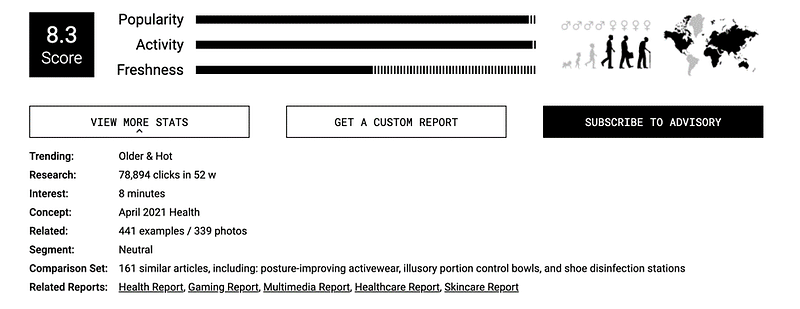
So, let´s go to the cool examples and in-depth Trend analysis:
Coolhunting — Sustainability
1 — EcoBots
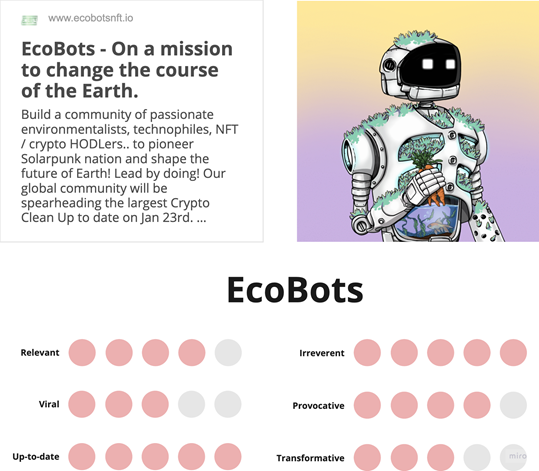
Description:
● NFTs of robots that fight for the Earth´s sustainability
● Offer: ownership of the preeminent Solarpunk inspired art collectable NFT
● Benefits:
– Voting rights within the EcoBots DAO (…) with decision making power on how EcoBots will shape the future of the Earth
– Exclusive and early access to IRL and metaverse events, giveaways, and tokenization
● Commitment: 10% of mint proceeds will be donated to #TeamSeas with the goal of removing 50,000 lbs of plastic from the Ocean
● Goal: our ultimate goal is for EcoBots to be trailblazers in building environmental impact & awareness into Web3.0, while impacting our Earth IRL! We will bring Solarpunk Nation to the main stage through Metaverse integration & continued expansion as the hub for everything Crypto Social Responsibility!
Why is it cool?
It shows a mix of sustainability, technology, and art represented through NFTs at Metaverse. It means an early movement of business and branding operations/activation at Metaverse. Collaborative participation of owners of the EcoBots in the funding of sustainable initiatives through the revenue generated by the EcoBots community. As it is an early move on Metaverse, it shows a lot of promises and compromises as the enterprise grows and a different kind of market relationship compared to what we see in the “offline” world. The storytelling is inspiring and engaging, selling the idea or attitude before the product or property.
2 — Mercedes Avtr Car
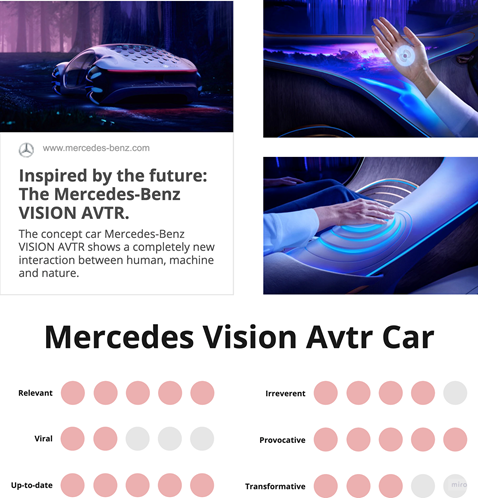
Description:
● Concept car developed by Mercedes-Benz inspired by Avatar’s movie and completely without emissions
● The car’s design had the objective of being part of the ecosystem/environment, and it works as an organism more than a car
● Wheels are like animal parts, and they crawl 30 degrees sideways
● Mercedes used bio-design and neuromorphic hardware to design the car with the promise to minimize the energy requirements of sensors, chips, and other components to a few watts
● It used recycled materials, such as Dynamica, Karuun wood (fast-growing rattan), seat fabric made of ocean-wasted plastic, and more
● The car goes beyond the auto industry or merges it with the entertainment industry
● The dialogue-based system between the car and the user operates through a middle console that pulses for connection or a light control projected into the driver’s hand that responds to movements
● 33 omnidirectional flaps in the back of the car for aerodynamics, communication, and expression through AI
● Revolutionary battery technology using graphene-based organic cell chemistry and thus eliminates rare, toxic, and expensive elements such as metals
● The battery fully recharges in less than 15 minutes
Why is it cool?
It relates to the trend not only by the use of recyclable materials or the zero-carbon emission but also by its interdependent relationship with the driver. This concept refers to the deep connection between humanity, nature, and technology, going beyond Sustainability to consider its societal and cultural aspects. Economically speaking, this is not an excellent example because first, it isn´t for sale, and secondly, if it were, it wouldn´t be accessible since it is a luxury product/brand. Still, this innovation is inspiring, such as the fashion parades, which display pieces that won´t necessarily sell but inspire the industry with rough ideas or initial solutions to a movement of change — in the case of fashion, the changes in style, for example.
3 — Ocean Beer
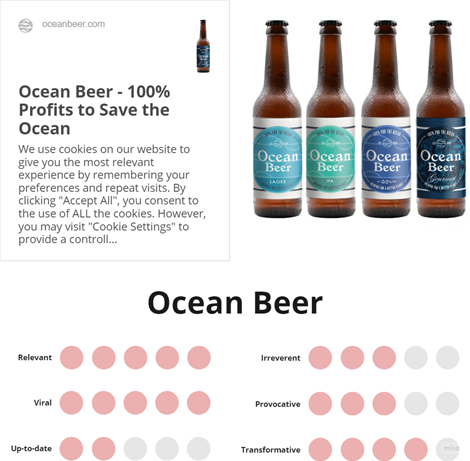
Description:
● Ocean Beer invests in high impact organizations with incredible teams of activists and scientists steering them
● Results: €107,401 — This is how much we were able to donate last year, thanks to you choosing Ocean Beer
● Mission: wholly-owned by the Ocean Born Foundation and was created to help protect and restore the ocean by donating 100% of the profits to this cause
● Commitment:
– We strive to keep our footprint as low as possible to ensure we cause no unnecessary harm to the planet
– We strive for low water output across our products and logistics capability, including areas such as water usage, energy efficiency, packaging, transport, etc
– We are currently measuring our carbon footprint, intending to reduce as well as offset our emissions by the end of every year
● Ocean Ambassadors: Help spread the word — Tuna de Medicina de Salamanca and Grayhound Ventures.
● Ocean Partners: Provide pro bono or low bono services to us
Why is it cool?
Ocean Beers becomes a great example of how the market and brands could cooperate to help planet Earth. It shows a systemic approach to sustainability, including the general society (Patrons), partners for awareness (Ambassadors), and sponsors for financial independency of the project (Partners). Each stakeholder has a unique way of contributing to the same goal, referring to the powerful idea of “natural” interdependence. The fact that the beer goes beyond recycling or recyclable material to approach the regeneration of the Earth is also related to the future because it is the next phase of sustainability. Not only do we know that the resources are finishing, but that to survive, we need to recover what we damaged too. The commercial structure behind it could go viral if the advertising industry, for example, starts creating products 100% committed to positive impact with low investment, shared responsibility, and high potential of awareness to the sponsoring brands.
4 — Google on Earth Day
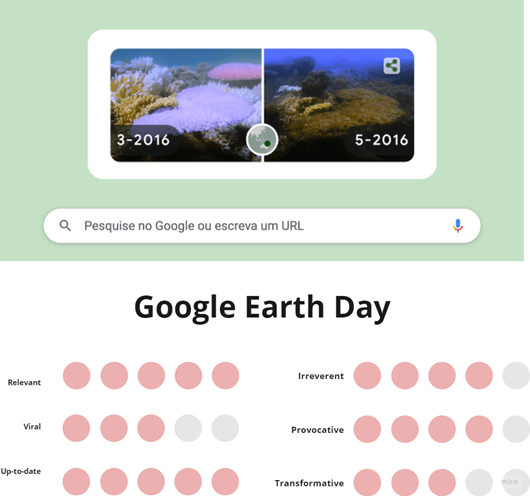
Description:
● Google constantly changes its main web page, including references to relevant and current dates, people, or events
● On the 22nd of April, Google presented a series of images of nature around the world using the style “before and after,” very popular on social media
● The campaign called my attention because the photos were not very much edited or with a lot of effects on them
Why is it cool?
Google’s campaign is a less complex cool example, but I think it is worth including because it is as simple as powerful. Google is famous for showing the actual image of spaces through Google Street View or the satellite vision of Google Maps. On this Earth Day, it had a similar approach to be as realistic as possible and shock people about how damaging we have been to nature. It made devastation, extinction, and pollution much more real and close to us than some images from the newspaper. We have been in an era of distrust and critics around the media, so these actions show huge potential in approaching and spreading information in a simple, honest, and impactful way.
Trend Analysis
This section represents the borderline between Coolhunting and Trends Analysis to me. It is here that the task of looking around and interpreting cool signs stops, and the closer attachment to Trends starts*. I find it easier to start building this connection by unveiling the concepts or themes behind each cool example and each trend to connect them again as the next step.
*Let me highlight that anyone could do both if capable of doing so, but these tasks or skills relate to different professions in Trends Studies (learn more about Trend Professionals here).
To do that here, I will first show the topics I discovered through the cool examples:
EcoBots:
– NFT
– Sustainable CryptoCurrency
– Metaverse
– DAO
– Storytelling
Mercedes Avtr Car:
– Zero emissions
– Organic battery cell
– Bio-design
– Neuromorphic hardware
– Recycled materials
– UX
Ocean Beer:
– Water usage
– Green Transport
– Energy efficiency
– Regeneration
– Packaging
Google on Earth Day:
– Extinction
– Devastation
– Pollution
– Awareness
– Internet
Using the Mind Map methodology, I will graphically show the themes behind each of the three trends I chose to use for this analysis. You can compare with as many trends as you want if you can. Still, I wouldn’t recommend broadening your scope too much because the outcome should be something like strategic orientations, and to achieve that, we need clarity, coherence, and objectivity. All trends will somehow affect your brand or business, but you must choose a more focused and segmented approach based on what affects you more directly in the short/mid/long term.
You can access the full description of each trend here, but for now, let’s go to the Mind Maps!
Macro Trend: Sustainable Systems
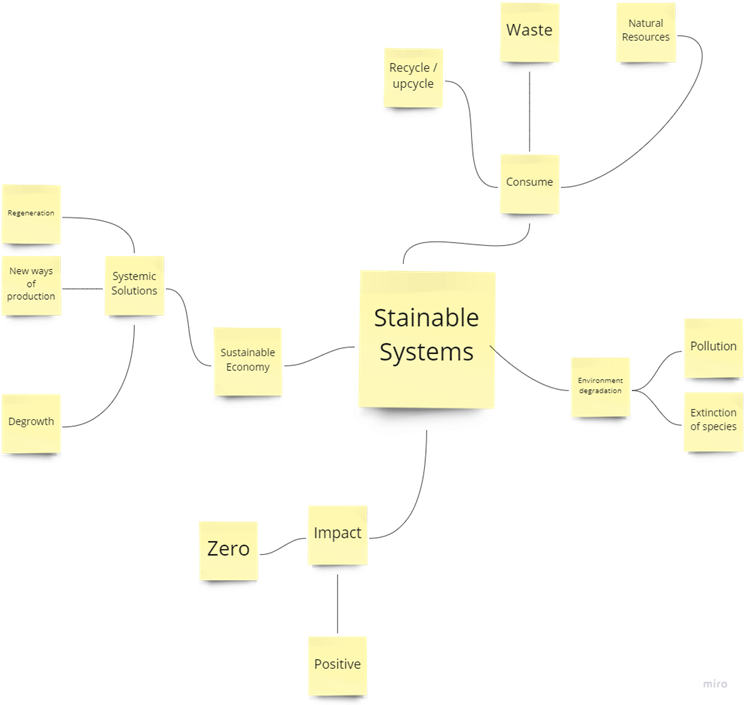
Macro Trend: Ergonomic Connections
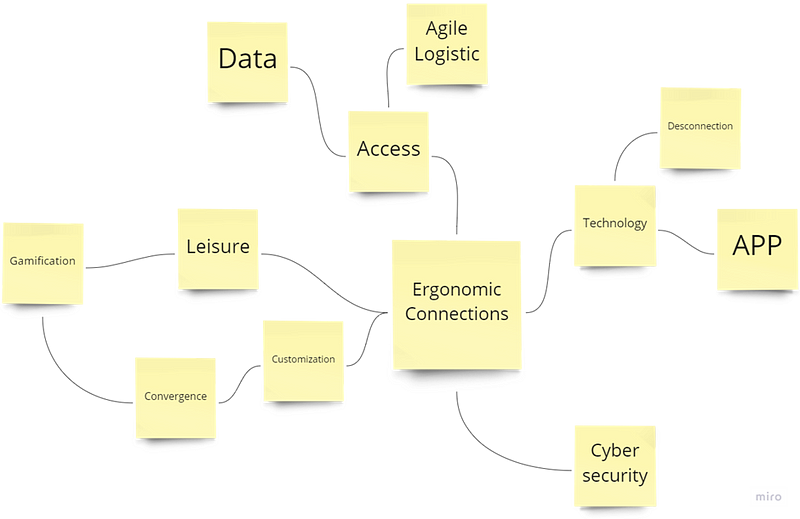
Macro Trend: Lifestyle Redesign
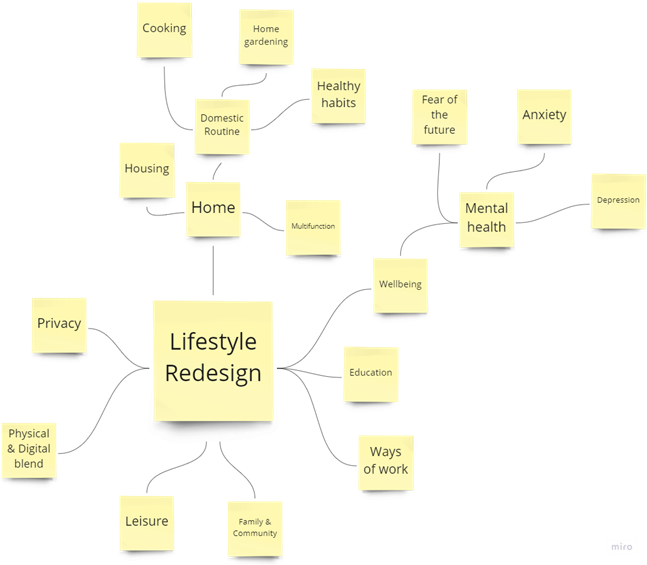
The next step was overlapping topics (changing the original colors from the trends’ post-its to the colors of the examples) between cool examples and trends, followed by adding new concepts close to the ties they relate. To connect all trends, I put the Zeitgeist in the middle of the net, so we never forget to have that in mind all the time when studying trends. Check here to understand this concept better and clarify how it relates to trends.
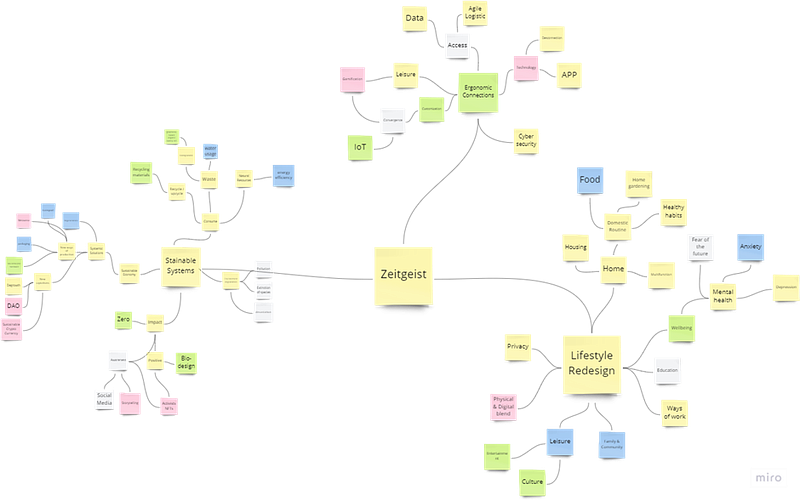
Legend:

Strategic Outcome
Very nice, but what next, Illa?
You have multiple outcomes from this exercise depending on the objective it had in the beginning. It is possible to create a Communication Plan where the content strategy includes these topics and how they connect conceptually or semantically. The articles, posts, campaigns, and messages your spread would be much richer than if you approached only very close connections.
It could also guide your company’s innovation pipeline by opening new research paths for “product development, process development, strategic alliances, and corporate venturing,” for example.
If we think about target segmentation, you could easily understand how to approach new markets and new groups of people with other interests that (now) you see why and how they relate to you.
For Trends Researchers, we could map those tracks and find out how new industries or sectors relate to or even reshape other trends with their interpretation and collaboration with those other movements of change.
Well, that’s all, folks! I hope you got inspired by the examples, methodologies, and analysts’ tips, but more than that, I hope the way I showed my process was clear enough to encourage you to try it in your context. If any doubt comes on the way, say hello 🙂
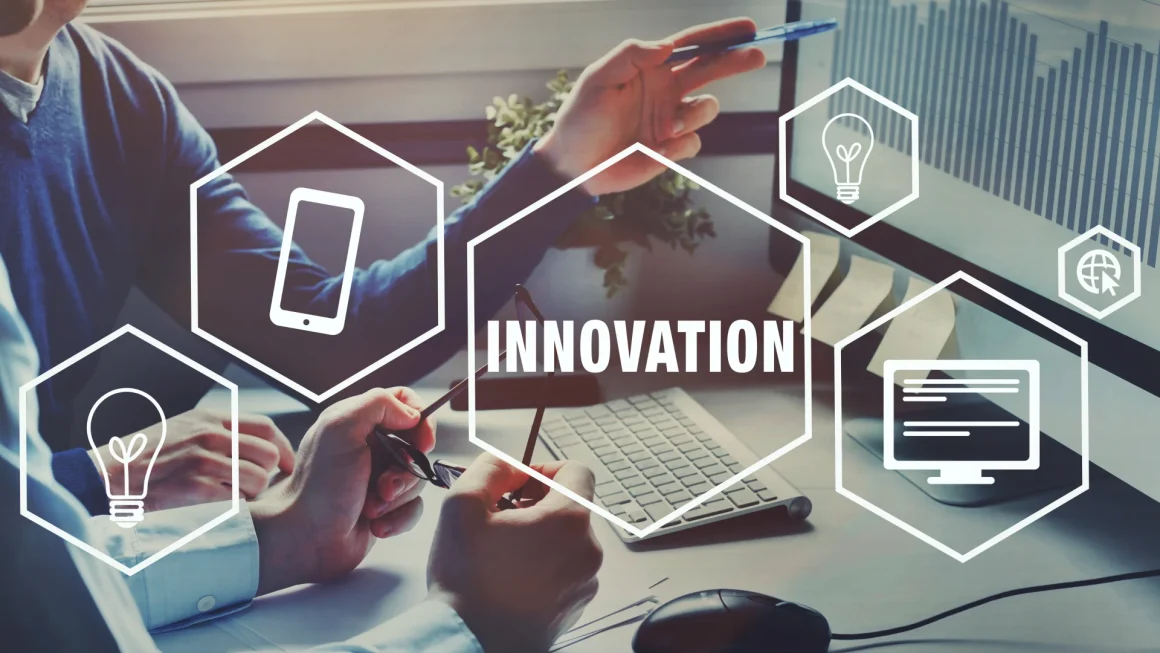

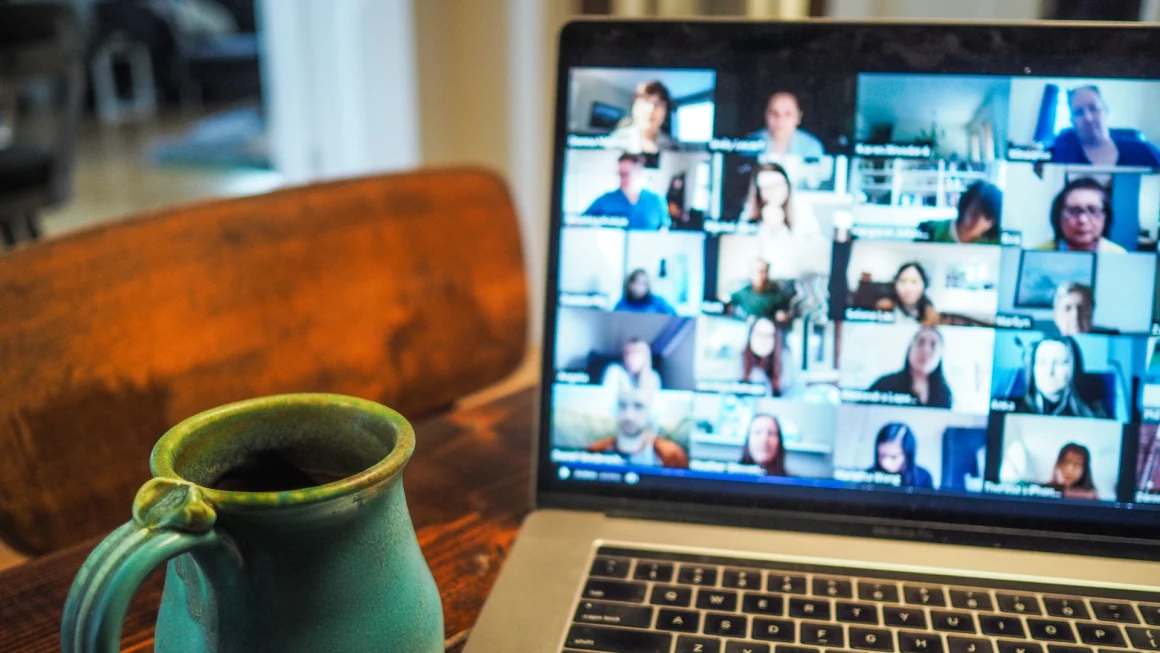

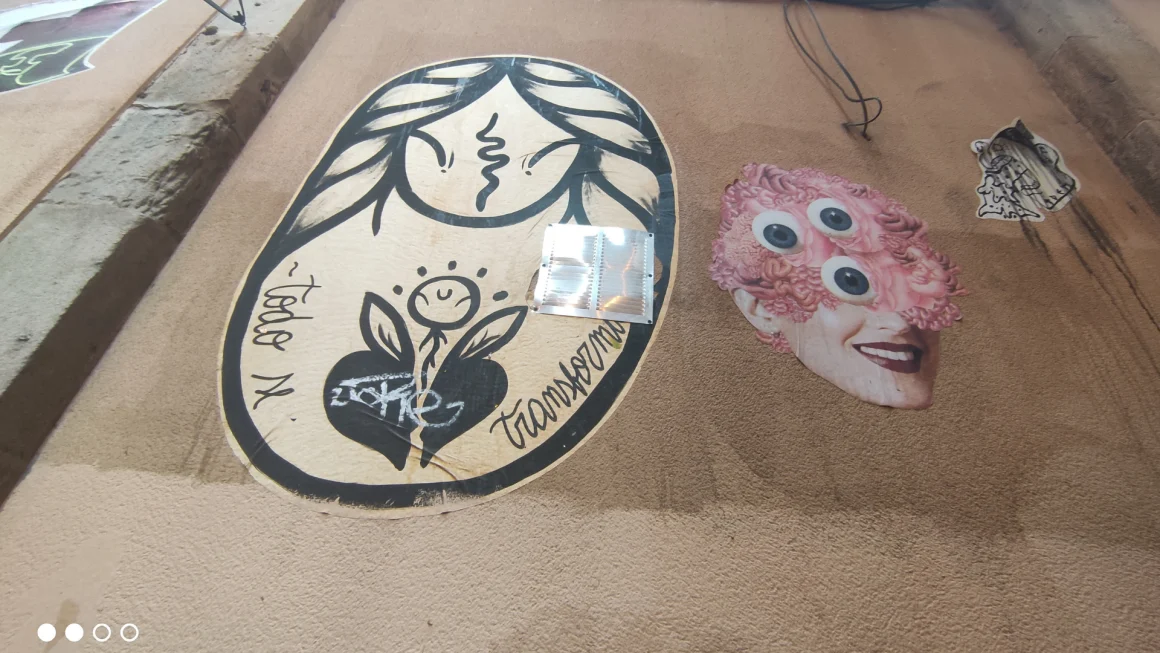

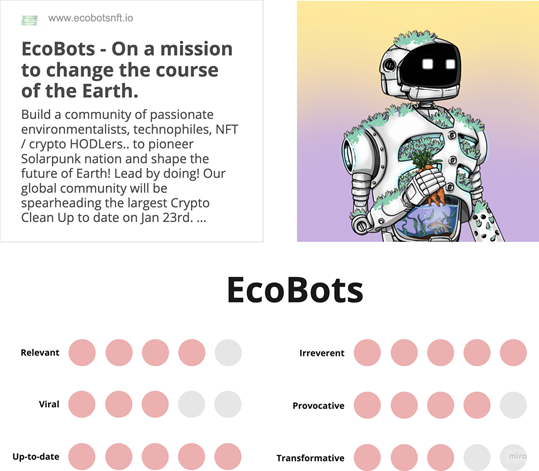
Support Us
We have an ad-free website, a load of content, and an infinite amount of love for everyone who supports Science of the Time.
So be a boss and join the Science of the Time Fanclub. Choose the 5,- euro per month option, the 50,- euro per year option or enter an amount yourself that you would like to pay to support us (Pay What You Want).